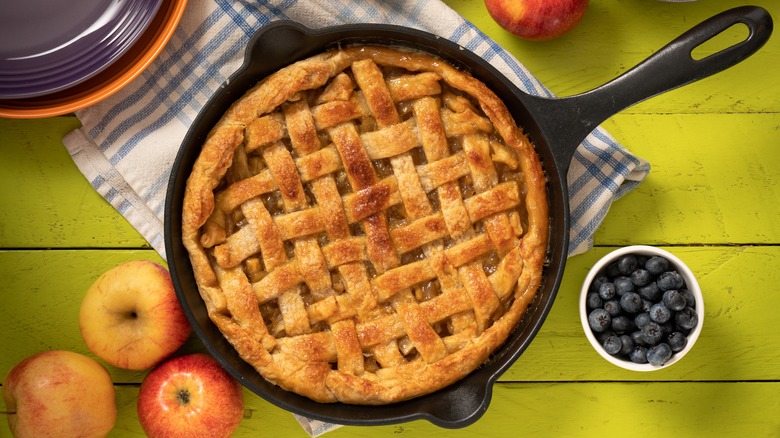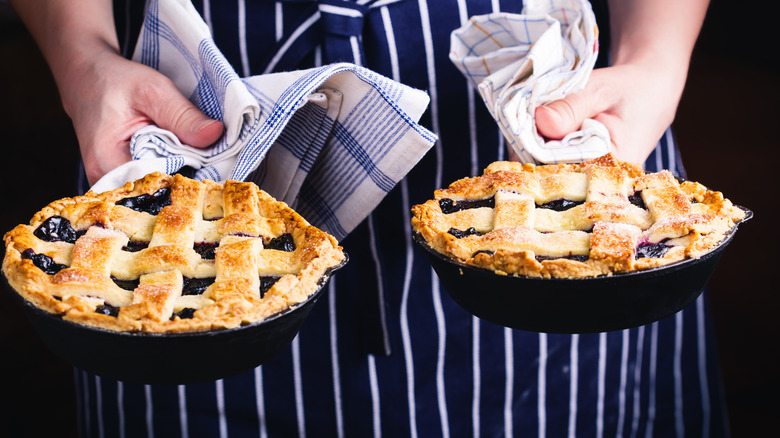It's Time To Start Making Pies In A Skillet
Cast-iron skillets have long been a favorite culinary tool among professional chefs and home cooks alike. A sturdy cast-iron skillet is a kitchen essential. It's classic and more reliable than the trendy gadgets you've collected on a whim and abandoned in the back of your closet. That's why cast iron has been used in cooking for centuries. The metal can seamlessly transition from stovetop to oven, and cast-iron vessels are ideal for preparing everything from evenly baked pastries to the best canned biscuits. For a crispy crust and convenient cooking, you can even bake your next holiday pie in a cast iron.
Cast iron gives off more heat and remains hot longer compared to other cooking materials, meaning the cast-iron baking method results in an even, well-cooked crust (no soggy bottoms!). You can offer up the rustic dessert in the dish it was prepared in, making for an effortless table display and easy cleanup. Plus, because the pan holds heat so well, your pie will probably still be warm enough to melt ice cream when guests dig in after dinner.
Why make a skillet pie
With a cast-iron skillet, you can cook both savory pastries and sweet pies to perfection. It's ideal for first-time pie bakers who don't own a classic glass or ceramic pie dish. But experienced cooks can also benefit from joining the skillet school of pie prep because it's all about rustic presentation and a crisp, fully baked crust.
Simply build your pie in a 9-inch or 10-inch skillet. Assembly is extra-easy if you accept the lure of frozen pie crusts. But you can also make your own, whether you think butter or shortening crust is best. Cast-iron skillets particularly excel at blind baking pie crusts. But to ensure the top crust doesn't burn, use a pie shield or build one using an aluminum foil hack. The finished pie will have a well-browned, balanced crust, wonderful for pairing with a scoop or two of ice cream.

